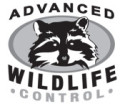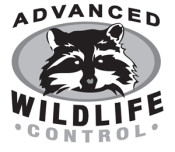Muskrats can remain underwater for as long as 20 minute! Muskrats actually can cause more damage than most other animals/rodents that we remove. They can single handily destroy a shoreline and erode your shore. Muskrats should be removed from your property immediately upon seeing them. The muskrat’s normal home range is usually within 200 yards of its den, although it may travel several miles over land in search of suitable habitat. They usually inhabit wetlands with an abundant supply of aquatic vegetation, such as swamps, freshwater marshes, lakes, ponds, and slow-moving streams. They feed primarily on aquatic plants, including cattails, water lilies, and duckweeds. Occasionally, they will even eat crayfish, snails, mussels, frogs, insects, and slow-moving fish.
Muskrats have an extremely high reproductive rate. A pair of muskrats can produce up to 3 litters per year and each litter can have 6 to 7 young. The breeding time is from late March through July. After a gestation period of 28 to 30 days, the young are born blind and helpless. The little muskrat will depend on their mother for about 30 days.
Muskrats are animals that need to be around water. The muskrat gets its name from its resemblance to a rat and from the musky odor that is produced by scent glands. Muskrats will eat vegetation and can also build many burrows in homeowners’ ponds. We remove muskrats from residential homes as well as many golf courses, businesses, and other areas where ponds are present.
Advanced Wildlife Control methods for removal:
Trapping muskrats is a past time for owner Paul Winkelmann. We doubt there are too many people in southeastern Wisconsin that can trap muskrats like Paul. Muskrats can cause extensive damage to your shorelines. Often the damage done by the muskrats can cost thousands of dollars to repair. In most cases we use lethal force to remove the muskrats, but in some cases we can live trap them as well.
DID YOU KNOW?
When a pond dries up, a muskrat can live for months by making underground tunnels and living off the grass, weed, and tree roots.

